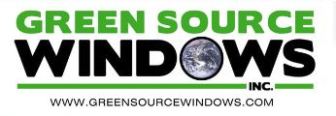WWW.GREENSOURCEWINDOWS.COM 1-888-690-9892
Midwestern winters challenge everyone. Green Source Windows wants to see everyone who needs windows have the chance to have their windows replaced. We are available to service the local and state community action agencies throughout North Dakota and Minnesota on behalf of those in need. A contact list is provided here for people living in North Dakota.
WONDERFUL PEOPLE DOING A WONDERFUL SERVICE.
COMMUNITY ACTION AGENCIES 7/1/10
REGION II
Community Action Partnership -Minot Region
2020 8th Avenue SE
Minot, ND 58701-5035
Phone: 839-7221/Fax: 839-1747
Toll Free: 1-800-726-8645
Email: agency@capminotregion.org
—————————————-
Willy Soderholm, Executive Director
John Meyer, Energy Conservation Coordinator
Connie Bounting, HOME/Self Reliance Program
Specialist Coordinator
John Wallen, Finance Director
Mary Pandolfo, Board Chairperson
REGION III
Dakota Prairie Community Action Agency
223 4th Street NE
Devils Lake, ND 58301-2409
Phone: 662-6500/Fax: 662-6511
Toll Free: 1-800-321-5943
Email: dpcaalundon@gondtc.com
—————————————-
Perry Lundon, Executive Director
Lanny Duhamel, Deputy Director/Weatherizn Coord.
Darrel Nilep, HOME Housing Specialist
Janet Hannesson, CSBG Program Coordinator
Dorothy Weigel, Business Manager
Phil Langerud, Board President
REGION IV
Red River Valley Community Action
1013 North 5th Street
Grand Forks, ND 58203
Phone: 746-5431/Fax: 746-0406
Toll Free: 1-800-450-1823
Email: kentkeys@rrvca.com
—————————————-
Kent Keys, Executive Director
Kevin Severson, HOME
Chris Loveless, Admin. of Hous.& Energy Progs.
Kathie Johnson, Admin. of Hous.& Energy Progs.
Lora Machart, Case Manager/Self Reliance
Kaye Seibel, Fiscal Officer
Robert Kilichowski, Board Chairperson
REGION V
Southeastern ND Community Action Agency
3233 South University
Fargo, ND 58104-6221
Phone: 232-2452/Fax: 298-3115
Toll Free: 1-800-726-7960
Email: jimkappel@sendcaa.org
—————————————-
James Kappel, Executive Director
Gail Bollinger, Assistant Director
Don Schmidt, Weatherization Coordinator
Anise Graftaas, Housing Coordinator (HOME)
Denise Mullen, Self Reliance Coordinator
Curt Sommer – Fiscal Officer
Stacey Miller, Case Manager
Marion Iverson, Board Chairperson
REGION VI
Community Action Region VI, Inc.
1411 12th Avenue NE
PO Box 507
Jamestown, ND 58402-0507
Phone: 252-1821/Fax: 252-7108
Toll Free: 1-800-726-8179
Email: Kathy@cap6.com
—————————————-
Kathy Williams, Executive Director
Beth Fylling, Self Reliance
Rory Hoffmann, Housing Department Manager
Rory Hoffmann, HOME
Rory Hoffmann, Energy Coordinator
Kristina Huebschwerlen, Fiscal Officer
Sharron Brady, Board Chairperson
REGION VII
Community Action Program Region VII, Inc.
2105 Lee Avenue
Bismarck, ND 58504-6798
Phone: 258-2240/Fax: 258-2245
Toll Free: 1-800-223-0364
brendac@cap7.com
—————————————-
Brenda Sather, Executive Director
Abdullah Ali, Energy Coordinator
Jim Sather, HOME
Andrea Werner, Self Reliance
Diane Miller, Fiscal Officer
Diane George, Board Chairperson
REGION VIII
Community Action Partnership
202 East Villard
Dickinson, ND 58601-5247
Phone: 227-0131/Fax: 227-4750
Toll Free: 1-800-359-2243
Email: administration@dickinsoncap.org
—————————————-
Erv Bren, Executive Director
Donna Montalvo, Executive Assistant
Gary Peters, WX/Housing Coordinator
Greg Beck, HOME
Michelle Orton, CSBG Coordinator
Jim Pavlicek, Fiscal Officer
Robert Treitline, Board Chairperson
BRANCH OFFICE-REGION I
Community Action Partnership
120 Washington Avenue
Williston, ND 58801
Phone: 572-8191/Fax: 572-8192 / WX Fax: 774-3328
Email: deeannl@willistoncap.org
—————————————-
Deeann Long, Region I Coordinator
Tracey Cox, Case Manager
ND COMMUNITY ACTION PARTNERSHIP
Ann Pollert, Administrator
ND Community Action Partnership
3233 South University
Fargo, ND 58104-6221
Phone: 232-2452/Fax: 298-3115
annp@sendcaa.org




 Brought to you in forward by:
Brought to you in forward by: 
 Brought to you in forward by:
Brought to you in forward by: 
 Brought to you in forward by:
Brought to you in forward by: 







 An older window with a lower glass temperature feels colder because more heat is radiated from a person’s body to the window. Cold glass can also create uncomfortable drafts as air next to the window is cooled and drops to the floor. This sets up an air movement pattern that feels drafty and accelerates heat loss. High performance windows with lower
An older window with a lower glass temperature feels colder because more heat is radiated from a person’s body to the window. Cold glass can also create uncomfortable drafts as air next to the window is cooled and drops to the floor. This sets up an air movement pattern that feels drafty and accelerates heat loss. High performance windows with lower 
 In summer, strong direct sunlight strikes people and interior surfaces, creating overheating and discomfort. Windows with low
In summer, strong direct sunlight strikes people and interior surfaces, creating overheating and discomfort. Windows with low 



